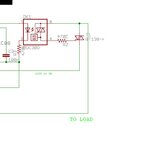burrow
Full Member level 2
I am trying to make a digital dimmer circuit,But i was not successful so i was finding fault part by part Lets leave the ZCD and microcontroller thing apart for now.
I am using M0C3020 and bt138. I tried powering up Moc directly but that doesnt turn on triac.
So my connection is as follows

I powered moc using 5v with 470 ohm resistor.
I also tried swapping TRIAC pins.
When i short terminals 4 and 6 of MOC, i can turn the triac on.
I tried changing MOC
I really have no idea why it isn't working. When i power up moc it should right away activate triac right as long as their is voltage across pin 1 and 2 (ofcourse AC IN is ON)
I am using M0C3020 and bt138. I tried powering up Moc directly but that doesnt turn on triac.
So my connection is as follows

I powered moc using 5v with 470 ohm resistor.
I also tried swapping TRIAC pins.
When i short terminals 4 and 6 of MOC, i can turn the triac on.
I tried changing MOC
I really have no idea why it isn't working. When i power up moc it should right away activate triac right as long as their is voltage across pin 1 and 2 (ofcourse AC IN is ON)
